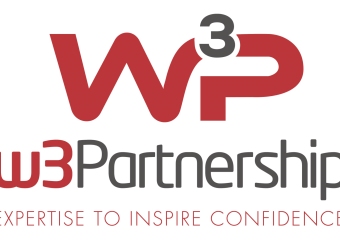From being a purely American phenomenon, the idea of Black Friday sales has rapidly caught on elsewhere in the last few years. 2016 saw Black Friday sales in the UK reach their highest level for two years (AUTHORITY URL: http://www.dailymail.co.uk/news/article-4007712/Black-Friday-sales-reached-highest-level-two-years.html) with more than £1.2 billion being spent online alone)
Black Friday represents a pre-Christmas boost for retailers and a useful extension to the holiday shopping period. But the success of their Christmas period sales isn’t purely down to marketing effort, much of the success can be attributed to the success of the supply chain, which if it is working properly determines a shoppers experience.
Measures of success
As a retailer, if you’ve got Black Friday right, you should have seen an increase in sales, both online and in-store. In terms of online sales, you should also see only a low percentage of abandoned orders or ‘drop-offs’ where people begin the ordering process but don’t complete through to the payment stage.
On the fulfilment side, you should be seeing good stock availability and a minimal number of orders that are not completed. This means fewer failed deliveries leading, in turn, to reduced complaints. Ideally effective fulfilment means a reduction in the number of returns too.
In the long term this should produce elevated levels of repeat business and fewer complaints about payments and orders in general.
Winners and losers
There will of course have been some businesses who were yet to get it right. They may have underestimated demand and struggled to fulfil orders, or they may have found their systems unable to cope with increased levels of traffic over the Black Friday period.
It’s rare to get everything right and most retailers will be able to identify at least some areas in which they can learn and take action to improve their performance for the next sales period. What’s important is to identify areas of weakness. In an increasingly online world, consumers are ever more intolerant of poor service and will quickly leave to shop elsewhere if they feel they’re not getting the levels of attention they deserve.
Part of the problem is that elements of the supply chain operation are inevitably going to be outsourced. Problems could occur with suppliers or with third-party carriers and, whilst outside your direct control, these can reflect badly on your business if they lead to a poor customer experience.
Retailers generally have a good idea as to what sells and what entices people into their shops or to visit their websites. Any systems put in place to integrate the supply chain need to support this and should serve to underpin existing operations. Equally, retailers need to have a clear vision of the benefits that integrated systems can provide and not expect them to be a panacea for all of their problems.
The key is to be able to balance supply and demand. With eCommerce and the increasing volume of data available to retailers about their customers, this should be easier. Demand forecasting via big data initiatives and the use of business intelligence in retail is becoming the norm. If applied correctly, this can help to streamline the entire supply chain process, allowing retailers to more accurately predict the products that will appeal to shoppers.
Of course, you do need to consider costs in all of this. Businesses of all types, not just retailers, are always under pressure to provide high levels of service at low cost. Any changes to systems must be able to deliver on this if they are to contribute to an improved bottom line. The key is agility, being able to respond quickly to customer demand and to have that speed of response echo throughout the supply chain.
Let’s work together
The crucial factor in ensuring that any sales and fulfilment process runs smoothly is to have effective integration of systems, both internally and with third-parties. Your sales needs to integrate with your stock control so that you’re not left with orders you can’t fulfil, and this in turn needs to link to distribution to ensure that goods are delivered to the right places, in good condition and on time.
These systems may of course be running on different platforms and at different geographical locations. The key to tying everything together is the use of APIs (Application Program Interfaces). These provide the functions and protocols needed for software to interact smoothly and accurately. APIs are effectively the building blocks of any successful integration project. Most systems will have some level of API functionality included, so integration teams need to understand what level of service is there already and which areas need to be extended in order to meet the business’ objectives.
Of course, it’s incredibly rare in the modern world for the entire supply process to be within one organisation. Other companies are often involved in the chain, from manufacturers, wholesale suppliers, storage providers, right the way through to delivery services. Streamlining the process will involve sharing information with these other companies, electronically exchanging purchase orders, stock lists, market forecasts and more.
Both retailers and the companies with which they work throughout the supply chain, from manufacturers to delivery services, therefore need to ensure that they have systems that are capable of exchanging information efficiently, accurately and securely.
You might assume that the increased adoption of cloud and software-as-a-service delivery models would ease this problem, but the issues of integrating different platforms remain. Indeed, they are routinely exacerbated by systems distributed in diverse locations and relying upon communication via the internet.
What management needs is visibility into all parts of the supply chain so that any problems or bottlenecks can be identified and resolved quickly. This means working closely with supply chain partners to exchange the key performance indicators needed to aid the decision-making process.
This isn’t just about technology, there is the potential to carry integration through into other areas of the business. This can be about moving certain operations further up the supply chain. For example, retailers are keen to reduce the amount of work they have to do to get products onto the shelves by having suppliers deliver merchandise in a store-ready form, whether this is groceries in a pack that can be slotted straight onto shelves or clothing supplied on hangars. There’s also the need to streamline transport operations; with rising fuel costs and restrictions on driver hours it’s vital that products get to the right place without errors.
Real-time integration
Exchanging data between systems is of course nothing new. But while in the past this may have occurred as a batch process, carried out overnight or at specific times of day, the demands of modern eCommerce mean that you need to be able to have systems working seamlessly together in real time.
Without real-time integration, you can all too easily face a situation in which a customer orders a product from the website before a centralised warehousing system knows that it’s no longer available. This leads to failed orders and unhappy customers. Where services such as delivery are outsourced to other companies, this compounds the risk that the retailer loses the ‘big picture’ making it harder to spot problems at specific points in the fulfilment process.
Integrated systems, therefore, need to be reliable and robust, tying point of sale information to back office and stock control as well as distribution. They also need to be flexible enough to accommodate increasingly popular features such as click and collect.
Internal integration
Of course, integration doesn’t just affect relationships with partner businesses. It can help internally too. It allows businesses to choose the best solution for each part of the operation rather than have a single platform that forces compromise in some areas.
It’s also useful for businesses that have grown by acquisition or merger, allowing operations to continue without the need to replace systems and retrain staff, at least in the short term. Point of sale systems are crucial; if they fail they affect your ability to do business. If you do need to look at standardising PoS across the whole of the business, then reliability of the system is an absolute top priority.
With any integration, whether it’s internal or with supply chain partners, there needs to be visibility at all levels of the process so that management has access to accurate, up to date information.
Tracking of products
Whether the business is trading online or on the high street, it’s crucial to know where products are throughout the process. Increasingly this involves the use of technology such as radio frequency ID (RFID) tags. These can be attached to pallets, boxes, or even in some cases individual items in order that they can be tracked at all stages of the supply chain from factory to store.
For this to work in an integrated supply chain there needs to be agreement on standardising the data held on the tags. Having to translate or cross check product codes is likely to lead to errors in processing and slow down the operation. Although it may take some effort initially, standardisation of information will pay dividends in the longer term.
Security
The risk of cyber attacks and data leakage are a major concern for all businesses in the modern world. Any integrated retail supply chain systems need to be secure. That means protecting information at all levels of the operation, particularly where it concerns the personal details of customers and payment information.
Sensitive data needs to be encrypted both at rest and while it’s in transit between systems. Of course, the network also needs effective perimeter security to guard against unauthorised access at all points. A breach of a supplier’s systems could put your data at risk so it’s important to understand what security arrangements are in place at all stages of the supply chain. This is a key area which needs to be addressed at an early stage of any project aimed at integrating systems.
If you’re exchanging sensitive information you do, of course, need to trust the companies with which you’re working. This isn’t just about IT security; you need to be sure that other businesses won’t make inappropriate use of information and that they’ll take care of the data in their possession. This may involve drawing up some form of confidentiality agreement as part of the integration process.
Obstacles to change
In older businesses, supply chain systems may well have been developed over a number of years and may have grown up internally to meet specific needs. Integrating these legacy systems can present a major challenge.
Retailers need to consider whether to adapt legacy systems, which may prove time consuming and costly, or whether they need to look at switching to a packaged solution. This then raises further issues surrounding whether you replace just the parts of the system needed for the supply chain or whether a move to a fully integrated ERP solution may be better. If contemplating a major change then, of course, there is an opportunity to make a choice that will fit with your supplier’s systems.
Markets are becoming increasingly fragmented, with more products on sale and more places where it’s possible to buy them. This presents a challenge in that it can mean having to deal with a wider range of items but with lower quantities of each line, adding complexity to ordering and tracking processes and potentially dealing with more suppliers.
The impact of legislation needs to be considered too. The forthcoming European Data Protection Regulations (EDPR), for example, mean that businesses will have to comply with new rules to protect customer information. When integrating, all systems across the supply chain will need to be made compliant.
By its very nature integration of the supply chain involves operations across different businesses and geographical locations. This means that network infrastructure is thrown into the spotlight. Having reliable, fast, safe links between systems is a key part of ensuring systems that will work well together.
Choosing an integration partner
In most cases, retail businesses will be looking for a partner to help with any significant systems integration project. They’re likely to have a clear idea as to what they want to achieve in terms of smoother operation and increased sales. Systems and IT suppliers need to be able to demonstrate to retailers how they can put their resources to work to deliver the objectives.
Retailers should also look to obtain references from any potential integration suppliers. Speak to other users of the system and check independent reviews before commissioning any systems. This will help to ensure that you don’t make a costly mistake.
It’s equally important to ensure that you can work with the supplier on an interpersonal level. It’s useful to have a point of contact, such as an account manager, but there are times when you’ll need to be able to talk directly to technical specialists in order to get issues resolved quickly.
Planning for smooth integration
In order to ensure that any integration runs smoothly it’s vital to begin with a detailed analysis of all the businesses and their systems. This needs to set clear objectives and expectations for everyone involved.
It’s crucial to recognise that IT systems are there to support the operation of the business. The business shouldn’t have to change in order to accommodate the systems. You also need to consider the human factor; staff need to be on-board with any changes and should be properly trained in the operation of systems in order to ensure that both individuals and the business get the most out of any changes. If the human side of the operation doesn’t work well together then there’s less chance of the systems doing so.
When integrating between retail and supplier systems, both sides need to work together to plan the requirements; design the APIs needed to integrate; and set out a project plan for implementation. They also need to work closely to resolve any issues that occur when the system begins to operate.
Conclusion
Retailers are under increasing pressure to deliver a high quality service to their customers. Customer loyalty is a fragile thing and whether you’re trading online or on the high street there are plenty of opportunities for people to go elsewhere if you get it wrong. And this isn’t limited to sales periods such as Black Friday; it happens all year round.
At the same time, there’s pressure to reduce costs and ensure that the business remains profitable. This can seem incompatible with providing a good service and retaining customers, let alone attracting new ones. It can seem an impossible balancing act.
Integration of the supply chain is one of the ways in which retailers can improve their performance and, ultimately, their bottom line. It’s something that requires commitment from all parties involved, but it can of course benefit suppliers too.
If retailers are forward-thinking they have an opportunity to make use of technology to respond to changing market trends; exploit new channels to reach customers; and still retain tight control of costs.




